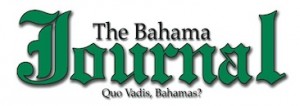The Clifton Review
The Clifton Review is a tri-weekly column that examines the question of the Clifton project along with the evolution of the war between two billionaires. We covered the start of this war with articles describing the battle over easement rights, the mysterious burning of a home, the blocks to rebuilding, and countless questionable court filings.
While the 2018 series salutes fashion mogul Peter Nygård’s Golden Jubilee detailing his rags to riches story, his incredible business success over these past fifty years and an inside look at how he did it, The Clifton Review will also continue to address current affairs as they relate to the good of The Bahamas.
Does ‘not long for this world’ describe your company?
By P.J. Malone
How badly do you want business success?
If it didn’t take focused effort to achieve high levels of business success, more businesses would be as successful as many of the giants out there. And, we’d be celebrating more phenomenal business growth as that of fashion mogul Peter Nygard’s.
As we have been discussing, organizational alignment is considered to be one of the most important business strategies for achieving business success. And as we having been sharing, a Harvard Business Review article has shed some light on how to achieve it and how to avoid its pitfalls.
With a view to testing your organization’s effectiveness, you were given two key questions from that article to ask yourselves during our previous discussion on organizational alignment:
How well does our strategy support the fulfillment of our purpose?
How well does our organization support the achievement of our strategy?
Writers for that Harvard Business Review article explain the results to these questions (that you scored on a scale of 1 to 10) through the use of a four-square matrix, which we will breakdown so you can determine where your company falls.
The x and y scales depicts two factors: “How aligned is your strategy with your organizational capabilities?” and “How aligned is your strategy with your long-term purpose?” respectively. The bottom left quadrant represents no alignment at all for the business; they label it “Not long for this world” and illustrate its meaning with a specific business example.
Not long for this world: Companies that score low on both scales are in crisis, even if it isn’t immediately obvious. Their strategies do not – cannot – fulfill their larger purpose, because they fail to effectively address customer preference, market conditions, and competitor capability. Equally significant, their organization is incapable of delivering against strategic priorities.
The fall can come quickly. Royal Bank of Scotland (RBS) was a flagship bank, feted for its stellar financial performance. It grew rapidly in the late nineties and early 2000s, transforming itself from a regional Scottish bank into a national British bank with the acquisition of National Westminster Bank in 2000, finally and fleetingly becoming a global universal bank with the acquisition of ABN Amro in 2007.
At its peak, RBS employed 170,000 people and operated in more than 50 countries with annual profits of £10.3 billion. In 2008, however, RBS failed spectacularly and was nationalized by the UK government to prevent its collapse.
Many have speculated since about failures of its leadership under its bullish former CEO, Fred Goodwin. Goodwin was notoriously combative, with a “Fred says” autocratic management style. RBS was also famous for its “strategy of not having a strategy,” being largely opportunistic and relying upon aggressive plays, agility, and audacity to outpace peers.
Supercharged inorganic growth — especially the acquisition of ABN Amro — meant that RBS grew very large, very quickly, with multiple different operating structures and sub-cultures. RBS outgrew the ability of its command-and-control leadership structure to effectively govern complex and diversified activities across international operations.
Many poor business decisions resulted in an accumulation of unsustainable toxic debt. Almost a decade on from its nationalization, RBS still remains on life support provided by UK taxpayers and is yet to return to sustainable profit, posting yet another loss in 2015 that has more or less wiped out the equivalent of all the public money invested since its downfall.
(From “A Simple Way to Test Your Company’s Strategic Alignment” By Jonathan Trevor and Barry Varcoe: hbr.org)
Stay tuned for more info on the matrix to discover your testing results.


